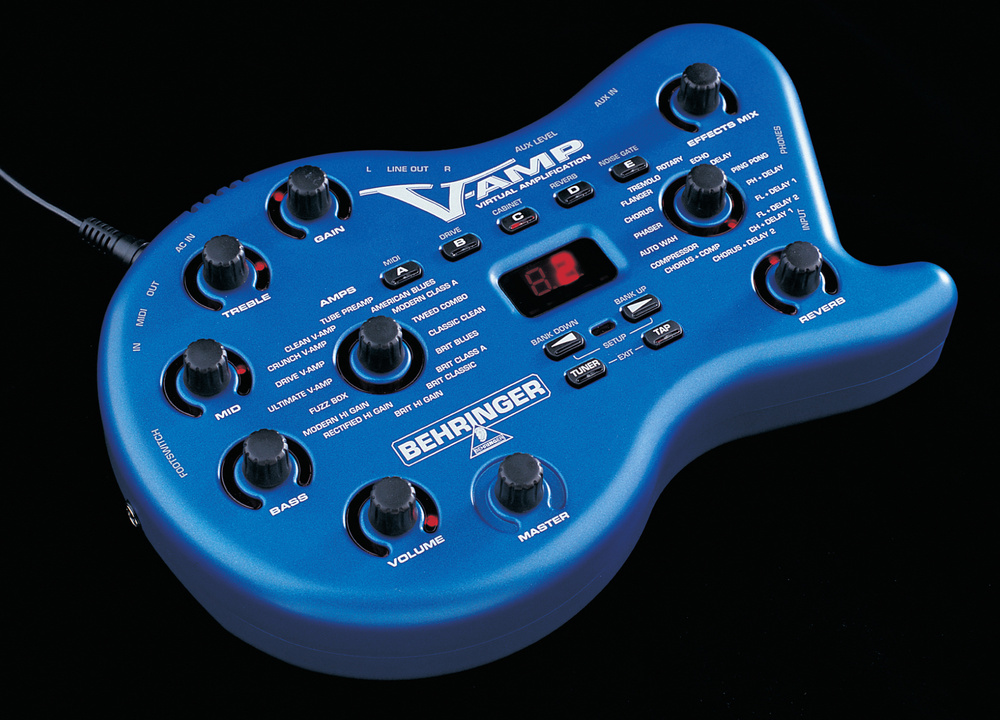Jarick
Rock Star
- Messages
- 5,049
It's interesting how different devices have converted people over time.
Axe FX was the first really good sounding modeler. Between using impulse responses and improvements in amp and effect modeling, it was actually possible to go direct with a modeler and get a great tone. Seems like the first people to adopt were some of the modern metal djent guys.
Kemper was the next big shift, and with the ability to profile amps and get a great tone without programming or tweaking, it started to show up in pro rigs on tour. Michael Britt probably had a big hand in the adoption too, and it's crazy to think devices released in 2011 or whatever are still on tour without much "need" to upgrade. Seems that a lot of pro touring guitarists came around with the Kemper.
While Helix kind of brought modeling more mainstream and to mass retail, I think it was the Helix LT and the HX Stomp that opened modeling up even more. Having flagship amp and effect modeling in the size of an effects pedal was a real game changer. You could easily and affordably sneak it onto a pedalboard, and then players started to dabble with the amp modeling more as a standalone. This is where a lot more weekend gigging guitarists and especially the P&W group started to buy into modelers.
The Boss Katana and Fender Tone Master opened up modeling to guitarists who wanted zero menus and a really basic interface. The Katana basically seemed to replace the Peavey Bandit as the cheap and reliable gigging combo, although I doubt anyone sold all their tube amps when they got one. The Tone Master though is a high quality modeling amp that was basically just seeking to make one sound really well, and unless you were specifically looking for the badging, you'd never know it wasn't a tube amp. These brought in more gigging guitarists.
And then you have plugins, especially the Neural DSP ones, that have brought in even more guitarists, especially those doing a lot of home recording.
At this point, you mostly just have tube amp purists and all the guitarists who gig and play but don't go online.
Axe FX was the first really good sounding modeler. Between using impulse responses and improvements in amp and effect modeling, it was actually possible to go direct with a modeler and get a great tone. Seems like the first people to adopt were some of the modern metal djent guys.
Kemper was the next big shift, and with the ability to profile amps and get a great tone without programming or tweaking, it started to show up in pro rigs on tour. Michael Britt probably had a big hand in the adoption too, and it's crazy to think devices released in 2011 or whatever are still on tour without much "need" to upgrade. Seems that a lot of pro touring guitarists came around with the Kemper.
While Helix kind of brought modeling more mainstream and to mass retail, I think it was the Helix LT and the HX Stomp that opened modeling up even more. Having flagship amp and effect modeling in the size of an effects pedal was a real game changer. You could easily and affordably sneak it onto a pedalboard, and then players started to dabble with the amp modeling more as a standalone. This is where a lot more weekend gigging guitarists and especially the P&W group started to buy into modelers.
The Boss Katana and Fender Tone Master opened up modeling to guitarists who wanted zero menus and a really basic interface. The Katana basically seemed to replace the Peavey Bandit as the cheap and reliable gigging combo, although I doubt anyone sold all their tube amps when they got one. The Tone Master though is a high quality modeling amp that was basically just seeking to make one sound really well, and unless you were specifically looking for the badging, you'd never know it wasn't a tube amp. These brought in more gigging guitarists.
And then you have plugins, especially the Neural DSP ones, that have brought in even more guitarists, especially those doing a lot of home recording.
At this point, you mostly just have tube amp purists and all the guitarists who gig and play but don't go online.






 .
.


